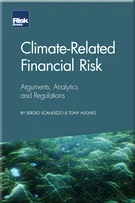Managing Reserve Assets
Christian Buschmann
Managing Reserve Assets
Introduction
Bank Capital and Liquidity
ALM in the Context of Enterprise Risk Management
The New Basel Standards on IRRBB and Their Implications for ALM
Measuring and Managing Interest Rate and Basis Risk
The Modelling of Non-Maturity Deposits
Modelling Non-Maturing Deposits with Stochastic Interest Rates and Credit Spreads
Managing Interest Rate Risk for Non-Maturity Deposits
Replication of Non-Maturing Products in a Low Interest Rate Environment
Managing Mortgage Prepayment Risk on the Balance Sheet
Considerations for ALM in Low and Negative Interest Rate Environments
Credit Spreads
Hedge Accounting
Supervisory Views on Liquidity Regulation, Supervision and Management
Measuring and Managing Liquidity and Funding Risk
Managing Reserve Assets
Instruments for Secured Funding
Asset Encumbrance
Capital Management
A Global Perspective on Stress Testing
Reverse Stress Testing: Linking Risks, Earnings, Capital and Liquidity – A Process-Orientated Framework and Its Application to Asset–Liability Management
XVAs and the Holistic Management of Financial Resources
Optimal Funding Tenors
Funds Transfer Pricing in the New Normal
Balance-Sheet Management with Regulatory Constraints
From the 1950s onwards, the asset side of a bank’s balance sheet would usually show a portfolio of sovereign bonds and bills. This changed in the first decade of the 21st century: with the flawed thinking that market liquidity can be taken for granted, the practice of holding assets of sovereign debtors fell into disuse in favour of holding higher yielding bank bonds and corporate bonds. This would have been attractive from the return point of view, as government debt carries lower returns than bank debt (Choudhry 2012, p. 622). It turned out, however, that these investments were less liquid than government debt.
Prior to the 2007–9 financial crisis, the assumption of guaranteed liquidity was somewhat correct: financial markets were liquid, and funding was easily available at low cost, but the emergence of the crisis showed how rapidly market conditions can change, leading to a situation where several institutions, regardless of their capital levels, experienced severe liquidity issues, forcing either an intervention by the central bank or a shutdown of the institution (Bonner and Eijffinger 2016).
Analogously to their thinking about market liquidity, banks did not consider
Copyright Infopro Digital Limited. All rights reserved.
As outlined in our terms and conditions, https://www.infopro-digital.com/terms-and-conditions/subscriptions/ (point 2.4), printing is limited to a single copy.
If you would like to purchase additional rights please email info@risk.net
Copyright Infopro Digital Limited. All rights reserved.
You may share this content using our article tools. As outlined in our terms and conditions, https://www.infopro-digital.com/terms-and-conditions/subscriptions/ (clause 2.4), an Authorised User may only make one copy of the materials for their own personal use. You must also comply with the restrictions in clause 2.5.
If you would like to purchase additional rights please email info@risk.net










